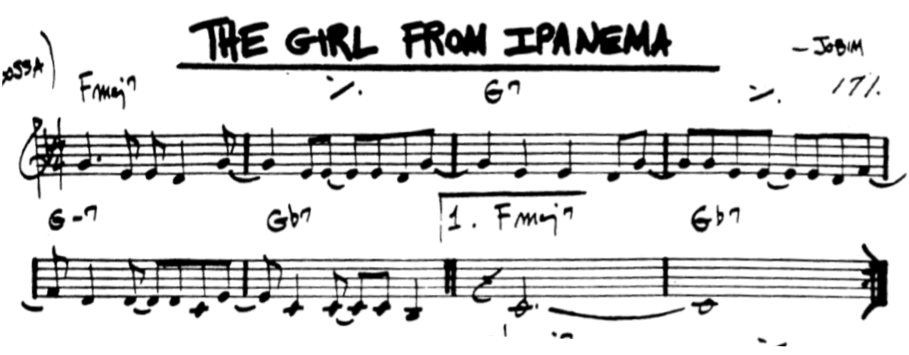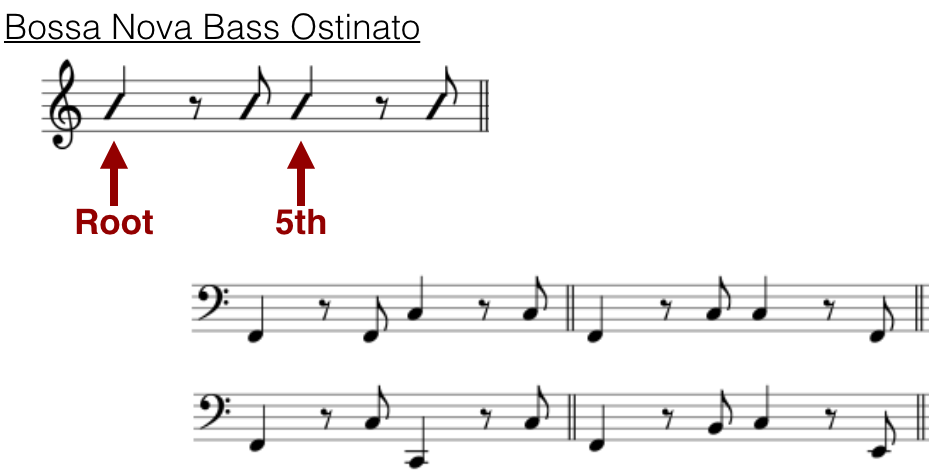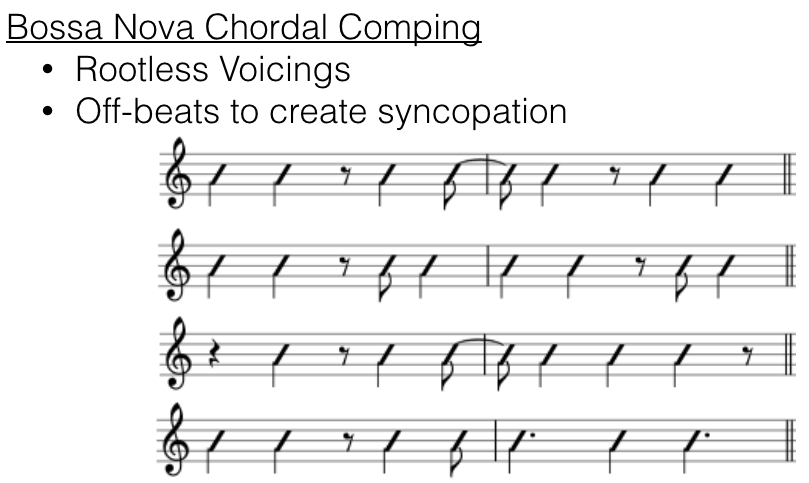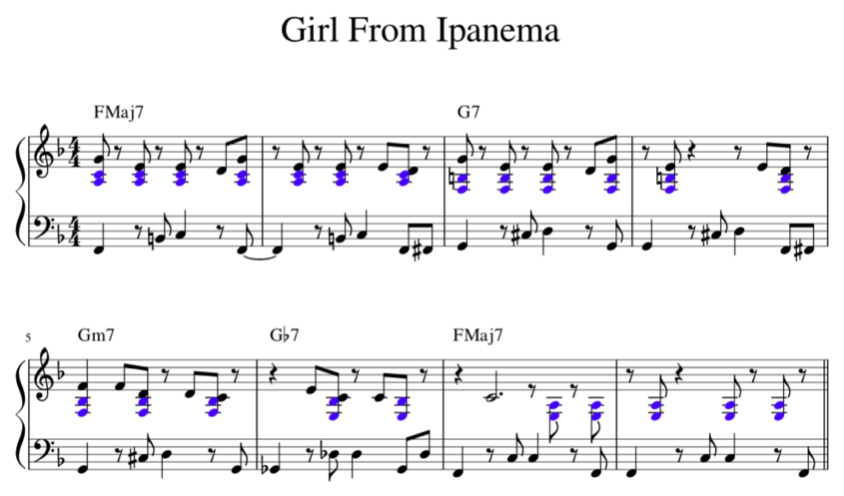Latin Jazz
Latin Jazz, as the name implies, is Jazz that uses rhythms derived from Latin American music. Now, there are two main categories of Latin Jazz:
- Afro-Cuban Jazz—based on Cuban music
- Afro-Brazilian Jazz— based on Brazilian music (typically referring to the Bossa Nova)
Before the Bossa Nova, the United States had already been exposed to some Brazilian music in the form of songs like ‘Brazil’ and ‘Tico Tico’. But it wasn’t until the creation of the Bossa Nova that the popularity of Brazilian music really took off.
Bossa Nova History
Bossa Nova literally means ‘new flair’ or ‘new trend’ in Portuguese. It is a style that was created in the late 1950’s. It is basically a fusion of Samba and Jazz, so using traditional Brazilian rhythms but with more harmonically complex jazz harmony and more melodic dissonance. The most important Bossa Nova composer is Antonio Carlos Jobim while the most important musician is the singer and guitarist João Gilberto.
The Bossa Nova was largely a Brazilian trend in the late 1950’s. But it became hugely popular in the United States in the early 1960’s because Jazz musicians like Dizzy Gillespie, Stan Getz, and Charlie Byrd began playing Jobim’s songs. The 1959 Cuban Revolution helped too, by making celebrating Cuban culture a bit taboo in the US.
Bossa Nova Style
Stylistically, Bossa Nova is sparse, unemotional, and gentle. It ‘sways’ rather than ‘swings’. It was restrained in the sense that it used little vibrato or dynamic variation – in Jazz lingo, it was ‘cool‘ rather than ‘hot’. But the melodies and lyrics could still be quite emotional, melancholy, and touching. It is played with a straight rhythm but is highly syncopated (which gives it that swaying feeling).
The most important aspect of Latin music is the rhythm. The rhythm is what differentiates Latin Jazz from regular Jazz. But unlike Afro-Cuban music, Afro-Brazilian music does NOT have a clave. There is no central foundational rhythm around which all other rhythms are structured. All rhythms in Bossa Nova rhythms can be varied or interchanged. Having said that, because musicians like rules, there is a particular rhythm that is widely used in Bossa Novas that has been called the ‘Brazilian clave’ or the ‘Bossa Nova clave’. This rhythm (shown below) is often played by the drummer in Bossa Novas. However, this rhythm is NOT a central organising principle around which all other rhythms are structure. It is a rhythmic motif rather than a true clave. A guideline rather than a law. Again, Brazilian music does NOT have use a clave. And partly for this reason it sounds much more relaxed than Cuban music.

How to Play Bossa Nova
A Bossa Nova can be divided into three parts, with each one having a particular rhythm:
- Bass Ostinato Pattern;
- Chordal Comping Pattern; and
- Melody
Let’s tackle each one of the above individually and then slowly start combining them to create a full Bossa Nova song. As our example we will be using section A of Girl From Ipanema.

Bossa Nova Bass Ostinato
The bass ostinato is played with your left hand using the rhythms shown below. You want to hit the root note of the chord on beat 1 and the 5th of beat 3 of each bar. The little eighth notes before beats 1 & 3 can:
- Repeat the previous note;
- Anticipate the next note;
- Jump octaves; or
- Be chromatic approach notes; or
- Almost anything else, as these notes are short and harmonically unimportant (though they are rhythmically important).
The first chord of Girl from Ipanema is an FMaj7 chord, which means our bass ostinato will be targeting the notes F (root) and C (5th). This is shown below.

Bossa Nova Chordal Comping
Because the left hand is already playing the root note of each chord on beat 1 of each bar, we do not need to repeat it in the right hand. So we are going to use rootless voicings. There is no single chordal rhythmic pattern that you have to adhere to. Every song has its own variation and it changes throughout the song. Unlike Afro-Cuban patterns which adheres to a fixed rhythmic pattern, Bossa Nova comping is more fluid and organic as it varies over time and doesn’t adhere to a rigid formula. The only requirements is that the comping is syncopated – so use at least 1 or 2 off-beats. There are scores of different Bossa comping patterns, so we can’t go through all of them here. Below is just a sample of a few commonly used ones. Practice these separately, then try combine them with the left hand bass ostinato.

Melody
Finally, we can now add the melody on top. To do this, learn to play:
- The melody by itself;
- The melody with the bass ostinato;
- The melody with the chords (using shell chords) & the bass ostinato.
We cannot continue using rootless voicings to play the chords because we need to leave a few fingers free to play the melody. For this reason, we will instead play shell chords with the bottom two fingers on our right hand and the melody with the top three fingers on our right hand. When playing shell chords, try to play the 3rd & 7th (Guide Tones) of each chord, but if these are too difficult to reach you can play the 3rd & 5th instead.
Below is a demonstration of how this is done. The shell chords are highlighted blue.

Bossa Nova Improvisation
When improvising, I take a similar approach. The left hand continues to play the bass ostinato, while the right hand alternates between a short improvised phrase and comping the chords. For an example of how this is done, watch the below video (towards the end).